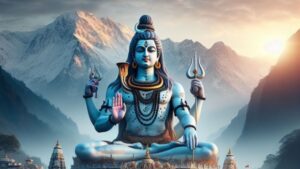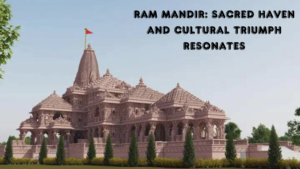India : The Timeless Echo of Ancient Art
India’s ancient art reflects its rich and diverse cultural history, a profound connection between spirituality, nature, and humanity. The vast array of artistic expressions that emerged from the Indian subcontinent over millennia tell stories not just of religious devotion, but also of societal values, political power, and philosophical thought. From cave paintings to intricate sculptures and grand temple architecture, ancient Indian art offers a window into the soul of a civilization that has left an indelible mark on the world.
1. Bhimbetka Rock Shelters: India’s Prehistoric Canvas
The Bhimbetka rock shelters in Madhya Pradesh are among the oldest known artistic expressions in India, dating back to the Paleolithic age. These UNESCO World Heritage sites showcase over 500 caves adorned with paintings that depict the daily lives of prehistoric people. The rock paintings portray scenes of hunting, dancing, animals, and communal gatherings. What makes Bhimbetka so unique is the continuity of human habitation in these caves over millennia, with the art evolving over time, reflecting changing lifestyles and beliefs. These early works of art illustrate how deeply our ancestors were connected to nature and their surroundings.
2. Indus Valley Civilization: Art of a Forgotten Era
The Indus Valley Civilization, one of the world’s oldest urban cultures, flourished around 2500 BCE in what is today Pakistan and northwestern India. Though much about this civilization remains shrouded in mystery, its artistic legacy survives in the form of intricate seals, pottery, and figurines. The seals, often carved with animal motifs and script, are thought to have had both commercial and religious significance. Among the most iconic works is the bronze “Dancing Girl” of Mohenjo-daro, a small but striking figurine that suggests a sophisticated understanding of human anatomy and movement. The art of the Indus Valley is characterized by its precision, attention to detail, and the seamless integration of functional objects with aesthetic beauty.
3. Buddhist Art in India: The Birth of Spiritual Imagery
Ancient Indian art saw a significant transformation with the rise of Buddhism around the 6th century BCE. The art of this period is deeply symbolic, reflecting the spiritual journey of enlightenment. The earliest Buddhist art can be found in the stupas—large dome-shaped structures meant to house relics of the Buddha. The Great Stupa at Sanchi, with its beautifully carved gateways (toranas), depicts scenes from the Buddha’s life and Jataka tales (stories of the Buddha’s past lives). Notably, early Buddhist art refrains from depicting the Buddha in human form, instead using symbols like the Bodhi tree, the lotus, and the wheel (Dharma Chakra) to represent his presence and teachings. It wasn’t until later that human representations of the Buddha emerged, especially in Gandhara and Mathura styles, blending Greco-Roman influences with Indian spiritual themes.
4. Ajanta and Ellora Caves: Masterpieces of Cave Art
One of the crowning achievements of ancient Indian art is the rock-cut cave complexes at Ajanta and Ellora, both located in Maharashtra. The Ajanta Caves, dating from the 2nd century BCE to 5th century CE, are renowned for their exquisite murals and sculptures that vividly narrate stories from the life of Buddha and other significant Buddhist themes. These paintings, with their graceful figures, vibrant colors, and attention to emotion, demonstrate a profound understanding of human psychology and spirituality.
Ellora, on the other hand, is a celebration of India’s pluralistic heritage, featuring Hindu, Buddhist, and Jain temples carved out of solid rock. The Kailasa temple, dedicated to Lord Shiva, is a monumental piece of architecture, carved from a single rock and filled with intricate sculptures of gods, goddesses, and mythological scenes. The artistry of these caves reflects a deep devotion to religion while also showcasing the technical prowess of ancient Indian craftsmen.
5. Temple Architecture and Sculpture: The Grandeur of Hinduism
As Hinduism began to dominate the religious landscape, Indian art saw the rise of temple architecture and sculpture. The ancient temples of India are not just places of worship but also monumental works of art, with each temple telling stories of gods, goddesses, and cosmic mythology. The temple complexes at Khajuraho, Konark, and the Brihadeeswara Temple are outstanding examples of this period.
The temples of Khajuraho, built by the Chandela dynasty between the 9th and 11th centuries, are famous for their intricate stone carvings that depict everything from divine figures to scenes of daily life and eroticism. These sculptures celebrate life in all its aspects—spiritual, physical, and emotional—emphasizing the idea of unity between the divine and the human experience.
The Sun Temple at Konark, built in the form of a massive chariot, represents the peak of architectural and artistic achievement in eastern India. Every inch of this temple is adorned with detailed carvings, from the colossal wheels of the chariot to scenes of musicians, dancers, and celestial beings.
6. Indian Miniature Paintings: Art in Every Detail
Indian miniature painting, though flourishing in the medieval period, has its roots in ancient art forms and evolved over centuries. These small, detailed paintings were often created as illustrations in manuscripts and depicted a variety of subjects, from religious stories to courtly life and nature. The Rajput and Mughal miniature painting styles stand out for their unique blend of Persian influence and Indian themes.
The use of bright colors, fine brushwork, and intricate detailing in these paintings, especially in the portrayal of nature and human emotions, is unparalleled. Each painting, despite its size, captures a world of symbolism, emotion, and narrative, reflecting the cultural richness of the time.
Conclusion: Ancient Indian Art as a Timeless Cultural Treasure
Ancient Indian art is much more than just a visual expression; it is a living testament to India’s rich cultural and spiritual heritage. Whether it’s the prehistoric cave paintings of Bhimbetka, the majestic temples of Khajuraho, or the serene Buddha sculptures of Sanchi, these artworks reflect the complex and layered history of India. They showcase the country’s profound engagement with religion, philosophy, and the human experience, with art serving as the bridge between the material and spiritual worlds.
The lasting influence of ancient Indian art continues to resonate in contemporary culture, both within India and across the globe. These timeless creations remind us of the universal human desire to connect with the divine, tell stories, and leave a mark for future generations to admire and learn from. In essence, ancient Indian art is a mirror to the soul of a civilization that has shaped the world in countless ways, from philosophy and science to art and architecture.







